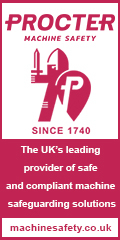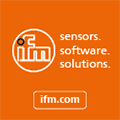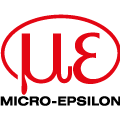
Posted to News on 13th Jun 2007, 15:13
Modelling software aids development of imaging system
Philips Medical Systems is using Vector Fields' specialised 3D electromagnetic modelling software to design a commercial X-ray imaging systems with 'active optics'.

The three-dimensional version of Vector Fields' specialised electromagnetic modelling algorithm for charged particle beams is playing a key role in the development cycle of Philips Medical Systems' first commercial X-ray imaging systems with 'active optics'. Active beam technology supports dynamic focusing and positioning of the electron beam during investigation procedures, greatly improving the resolution and quality of imaging in CT (computer tomography) and cardiovascular scanning equipment.
Vector Fields' solver for charged particle beams - which runs as part of the Opera toolsuite - has helped Philips Medical Systems to overcome the design challenge of actively focusing an X-ray tube, which is subject to complex space-charge effects. Space charge impacts emission efficiency and distorts beam trajectory, and its effects are exacerbated as emission current increases - which itself is highly desirable in X-ray equipment for both speed of operation and the ability to image denser material.
Vector Fields' Opera electromagnetic modelling suite is being used by Philips to help design the emitting elements and an 'electromagnetic lens' beam focusing system. The software has been particularly useful in understanding focusing at higher beam current levels, as distortion from the space charge effect is non linear and very hard to predict. The software allows users to model performance using a combination of emission effects including the Langmuir-Fry current limits.
Saving development time and cost
Dr Wolfram Maring of Philips Medical Systems comments: "The active optics design problem has a lot of variables, and it would be extremely difficult to bring a system to market without the aid of an accurate modelling tool. Opera's 3D charged particle beam solver has saved a great deal of development time and cost. It has helped us prove our basic active optics concept, and eliminated several prototype iterations of the focusing system - keeping this major investment project on track."
This is the second major project where Philips has had the benefit of the 3D version of the particle beam solver. Before receiving this iteration of the software from Vector Fields, engineers typically had to fabricate one or two more physical prototypes than they do today, as the 2D package they had previously used could not simulate all of the characteristics of the final X-ray tube design. Opera also makes it relatively easy to study layout tolerances, helping Philips to investigate lifecycle aftercare issues for the new product.
Finite element analysis
Philips Medical Systems is a long-standing user of Opera, and the company's support has played a key role in the development of the charged particle beam solver. This solver uses finite element techniques to analyse the electromagnetic fields coupled with the space charge effects on high-current (charged particle) beams. The software supports the import of models created by standard CAD systems for easy and fast modelling.
Space charge is a net electrical charge in a region of space. A negative space charge often occurs near a metal object in a low electrical field when heated to incandescence in a vacuum. The effect was first observed by Thomas Edison in light bulb filaments, where it is sometimes called the Edison Effect. Opera users can calculate the current emitted by thermionic cathodes. Simulation of the electromagnetic effects in particle beam trajectories, space charge distribution and electrostatic field stress, then provides detailed information and visualisation of the system, giving the basis for design improvements.
Want the latest machine building news straight to your inbox? Become a MachineBuilding member for free today >>

















